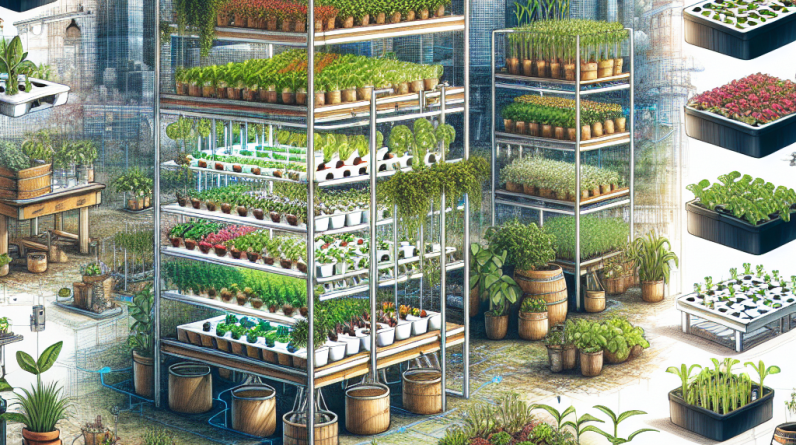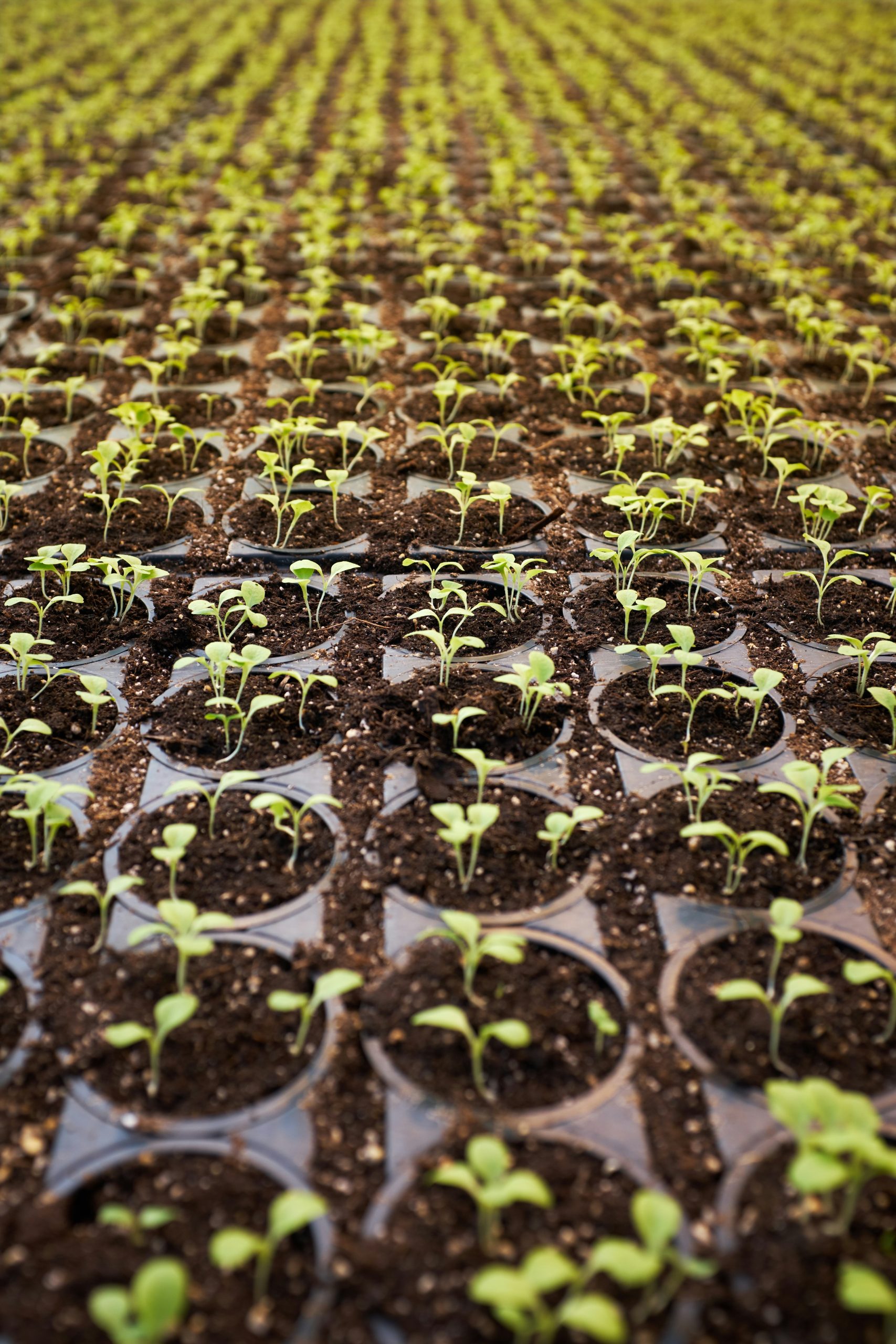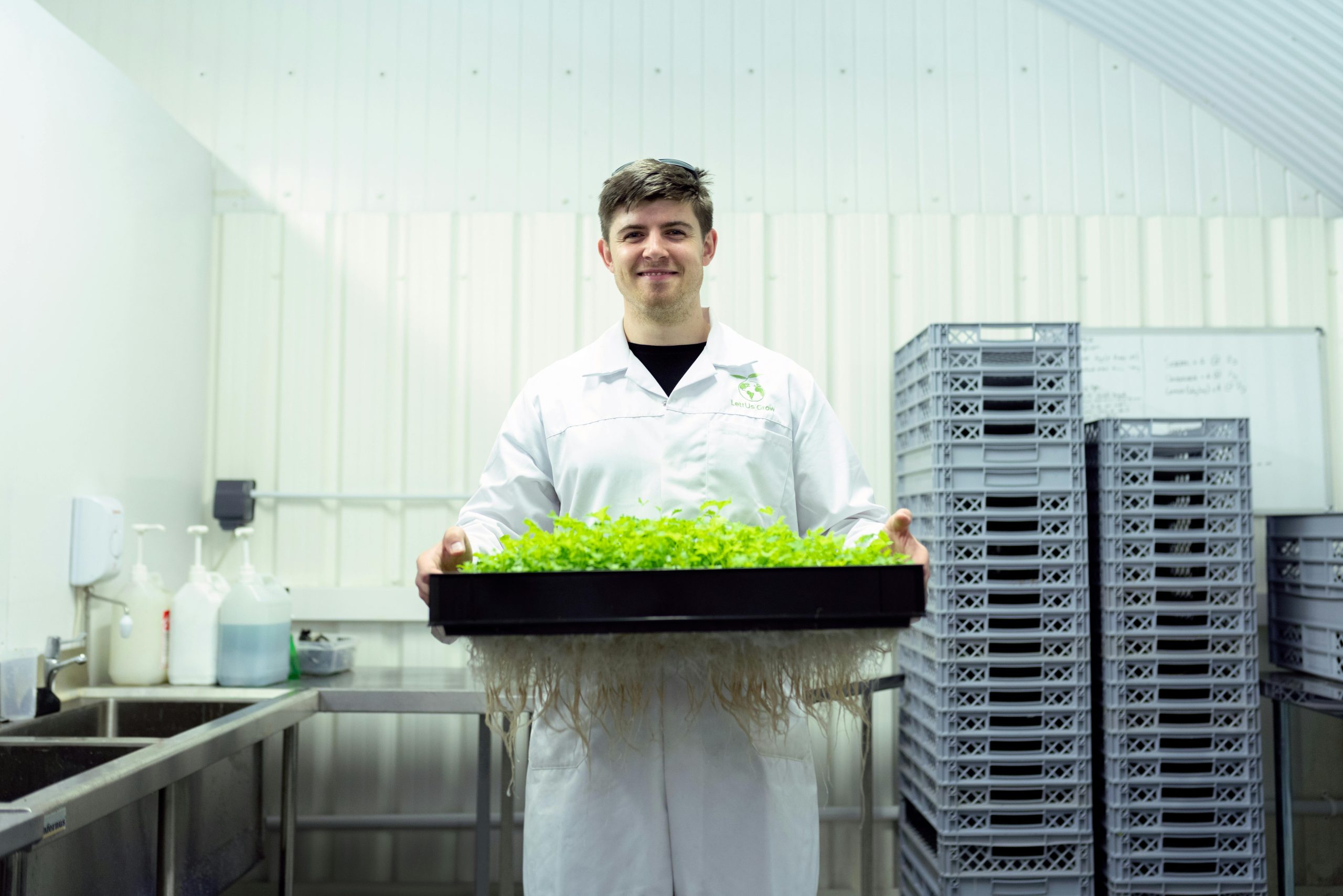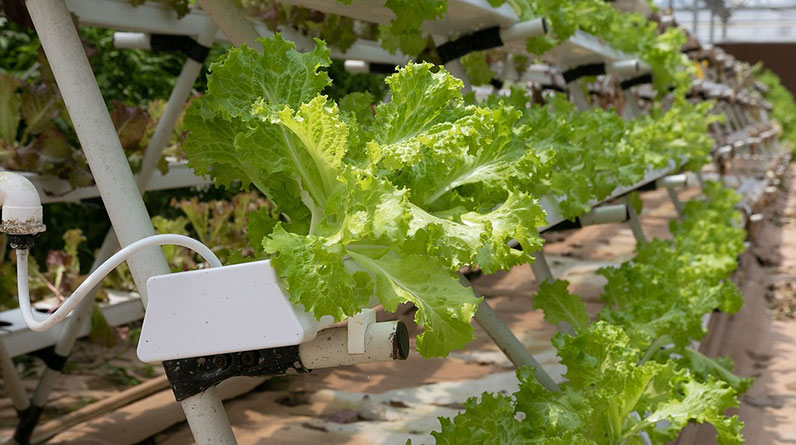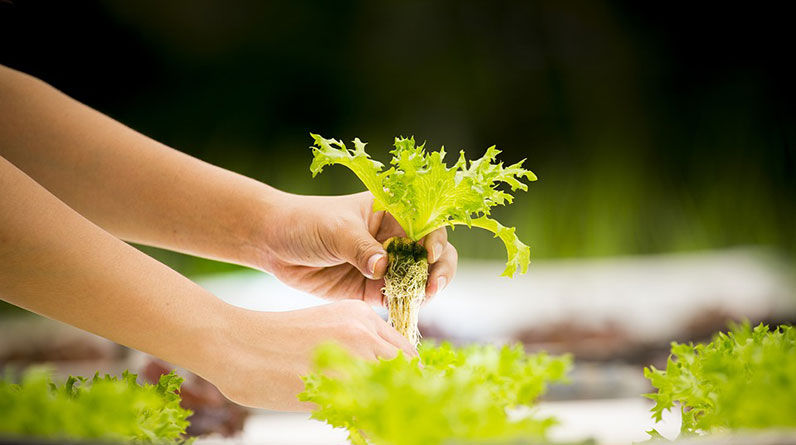
1. Optimized Lighting Systems
Understanding Light Requirements
A crucial element of any successful small hydroponic grow system is proper lighting. Plants rely on light for photosynthesis, which directly impacts growth rates and yields. In 2025, advanced LED lighting technology has become standard for small hydroponic setups due to its energy efficiency and customizable spectrum options. Understanding the specific light needs of your crops ensures healthy development.
Different plants have varying light requirementsâleafy greens like lettuce thrive under lower light levels, whereas fruiting plants such as tomatoes need more intense, full-spectrum lighting. Tailoring your lighting setup to your plant selection can significantly enhance productivity.
In my experience, employing adjustable LED grow lights with dimming capabilities allows for optimal control. This flexibility helps mimic natural sunlight cycles, promoting healthier plant cycles and better yield quality.
Lighting Placement and Timing
Proper placement of lights directly influences how uniformly your plants receive light. Installing fixtures at the correct height prevents hotspots or shadows, ensuring an even distribution across your small hydroponic grow system. In 2025, automatic height adjustments and smart timers significantly simplify this process.
Timing is equally vitalâmost plants benefit from 14-18 hours of light per day. Utilizing programmable timers helps maintain consistent light cycles, promoting strong growth and preventing stress or flowering issues.
Automated control systems now integrate with smartphone apps, allowing remote adjustments and monitoring, which Iâve found to save time and improve plant health management.
2. Smart Nutrient Delivery
Automating Nutrient Mixes
In recent years, automation has transformed nutrient delivery in small hydroponic grow systems. Using smart dosing systems, you can automate the precise addition of nutrients based on real-time data, reducing waste and optimizing plant intake.
Many growers, including myself, prefer digital reservoirs connected to sensors that monitor pH, EC (electrical conductivity), and nutrient concentrations. These systems adjust the feed automatically, ensuring your plants always receive the optimal nutrient levels.
This approach not only saves time but also ensures consistency, which is critical for high-quality yields in 2025âs competitive market.
Compatible Nutrients and Feed Schedules
Choosing the right nutrient formulas is essential. Organic versus synthetic nutrients each have their pros and consâorganic nutrients promote sustainability, while synthetic options may offer quicker uptake. Small hydroponic grow systems benefit from nutrient schedules tailored to plant growth stages, from vegetative to flowering phases.
In my setup, I follow a staged feeding schedule, increasing nutrient concentration during the flowering phase to maximize fruit production. Using combination feeds designed for small hydroponic systems simplifies this process.
Maintaining regular testing with handheld meters ensures your system remains balanced, and adjusting feed schedules accordingly encourages healthy, vigorous plant growth.
3. Precise Water Management
Monitoring and Controlling Water Quality
Water quality plays a pivotal role in the success of a small hydroponic grow system. Filtering and monitoring ensure your plants are free from pathogens or contaminants. In 2025, advanced filtration systems and water quality sensors have become standard tools.
Regularly testing parameters such as pH, dissolved oxygen, and electrical conductivity helps prevent issues like root rot or nutrient imbalances, which can devastate crops.
I recommend integrating these sensors with automation controllers for real-time updates, allowing quick adjustments and minimizing manual labor.
Implementing Recirculating Systems
Recirculating hydroponic systems conserve water, which is increasingly important in 2025 with global water shortages. These systems reuse water and nutrients, reducing waste and operational costs.
Designing your small hydroponic grow system for efficient recirculation involves strategic placement of pumps and filters. Regular maintenance ensures consistent performance, preventing clogging or nutrient buildup.
In my experience, balancing flow rates and monitoring system pressure enhances overall efficiency and helps maintain optimal root zone conditions for healthy plant growth.
4. Compact Design for Small Spaces
Vertical and Modular Setup Ideas
Maximizing limited space is crucial in a small hydroponic grow system. Vertical stacking and modular designs allow you to cultivate multiple plant layers without occupying additional floor space. In 2025, modular rack systems with adjustable levels are highly favored.
These setups are scalableâstart small and expand as neededâmaking them perfect for apartments or limited indoor areas. Iâve successfully used vertical towers that can hold several plants each, doubling productivity in a confined space.
Utilizing space-efficient containers and stacking trays reduces clutter and streamlines maintenance, which is vital for small setups.
Choosing Suitable Containers and Materials
Container selection influences aeration, root health, and ease of cleaning. Lightweight, durable materials like food-grade plastics or composites are ideal for small hydroponic grow systems.
Consider containers with integrated drainage and custom fittings to optimize nutrient flow and prevent waterlogging. Clear containers allow for easy root inspection, which I find helpful to catch early signs of issues.
Labeling and organizing different plant varieties within small grow spaces further enhances operation efficiency and monitoring.
5. Automated Monitoring Tools
Integrating Sensors and Data Collection
Automation is the backbone of efficient small hydroponic grow systems in 2025. Sensors that track temperature, humidity, light, pH, and nutrient levels provide continuous data, giving growers actionable insights.
Using cloud-connected monitoring platforms enables remote oversight, alerts, and historical data analysisâsaving time and reducing the risk of crop failure.
From personal experience, integrating these tools simplifies troubleshooting and supports optimal growing conditions all year round.
Leveraging AI and Machine Learning
Artificial Intelligence (AI) and machine learning are revolutionizing hydroponic cultivation. These technologies analyze sensor data to predict plant needs, optimize conditions, and even suggest adjustments automatically in 2025.
Implementing smart algorithms can reduce manual labor and improve yield consistency. Many systems now come with built-in AI modules that learn and adapt to your specific setup.
I recommend starting with a reputable monitoring system that offers AI-driven analytics to keep your small hydroponic grow system running at peak performance.
6. Efficient Air Circulation
Designing Ventilation for Healthy Roots
Good air circulation ensures roots and foliage receive adequate oxygen, preventing mold and disease. In small hydroponic setups, using oscillating fans combined with filtered exhaust systems enhances air movement.
Proper ventilation promotes transpiration and nutrient uptake, leading to healthy, vigorous plants. Iâve found that positioning fans at different points creates optimal airflow patterns, reducing dead zones.
In 2025, smart ventilation systems with timers and sensors automatically adjust airflow based on environmental conditionsâthese are game-changers for small growers.
Controlling Humidity Levels
Maintaining optimal humidity (usually between 50-70%) is vital. Too high, and mold becomes a risk; too low, plants can experience stress. Humidifiers and dehumidifiers connected to environmental sensors make management straightforward.
In my experience, pre-setting target humidity levels combined with real-time adjustments minimizes manual intervention and leads to healthier crops.
Experimenting with different airflow configurations and moisture controls helps find the sweet spot for your specific plant varieties.
7. Eco-friendly Nutrients
Organic and Sustainable Fertilizers
As sustainability gains importance in 2025, many small hydroponic growers opt for organic nutrients. These promote a healthier environment and often result in tastier, more nutritious plants.
Using compost teas, fish emulsions, or other natural formulas supports eco-friendly practices. Itâs also better for microbial life in your hydroponic system, which helps nutrient uptake.
I advise researching certified organic products and incorporating them into your feeding schedule for a more sustainable setup.
Reducing Chemical Dependence
Minimizing chemical inputs not only benefits the environment but also reduces buildup and potential hazards in your small hydroponic grow system. Regular testing and gentle nutrient supplementation help maintain balance.
Choosing biodegradable containers and environmentally safe cleaning agents further aligns your operation with eco-conscious principles in 2025.
These practices foster a healthy, resilient system capable of producing high-quality crops sustainably.
8. Innovative Grow Mediums
Alternative Materials and Their Benefits
Traditional grow media like rockwool and coco coir are still popular, but in 2025, innovative mediums such as biodegradable cubes, mineral wool, or aeroponic foams are gaining traction. These materials improve aeration and reduce waste.
In my setup, switching to sustainable grow mediums has decreased environmental impact and simplified cleanup. Many new mediums also promote better root development and nutrient retention.
Experimenting with different options helps identify the best fit for your small hydroponic grow system, especially when space is limited.
Choosing the Right Medium for Your Plants
Compatibility is key. For leafy greens, responsive mediums that retain moisture are ideal, whereas fruiting plants benefit from structures promoting oxygen flow around roots.
Regular monitoring of moisture levels and root health guides medium selection and management. I recommend blending mediums for tailored benefits.
Utilize container inserts and modular systems to swap or upgrade mediums as needed without disrupting the entire system.
9. Space-Saving Vertical Setups
Designing for High-Density Planting
Vertical gardening allows for maximizing crop yields within limited footprints. Using wall-mounted or tower-based systems, you can cultivate more plants per square foot. In 2025, innovative modular vertical systems with integrated lighting and irrigation are popular.
This approach is perfect for small hydroponic grow systems aiming for scalability without expanding the physical footprint. Iâve successfully used vertical racks that are easy to assemble and maintain.
Consider accessibility and airflow when designing these setups to prevent issues like mold and ensure even growth.
Implementing Modular Units
Modular vertical units can be customized for different plant types and growth stages. Theyâre easy to expand and reconfigure, providing flexibility as your needs evolve.
Using such systems reduces clutter and makes maintenance more efficient. Additionally, integrated drip or NFT channels streamline watering, saving space and resources.
In my experience, maintaining balanced humidity and light distribution across vertical layers optimizes overall productivity.
10. Regular Maintenance Routines
Cleaning and System Checks
Consistent maintenance is vital for longevity and success of your small hydroponic grow system. Regular cleaning prevents pathogen buildup and ensures equipment operates efficiently. I recommend weekly inspections and cleaning routines, focusing on pumps, reservoirs, and filters.
Removing algae or biofilm and inspecting roots prevent common issues that can compromise plant health.
Keep a maintenance log to track recurring problems and implement preventative measures, thus reducing downtime and crop loss.
Adjusting System Settings
Environmental factors change with seasons, so adjusting lighting, ventilation, and nutrient schedules is crucial. In 2025, smart systems with preset profiles make this task more straightforward.
Daily or weekly fine-tuning based on plant responses optimizes growth conditions and helps achieve consistent yields.
Over time, these routines develop cohesive management practices that minimize problems and maximize output.
Frequently Asked Questions
Q1: What is a small hydroponic grow system?
A small hydroponic grow system is a compact setup designed for efficient soilless cultivation, suitable for small spaces like apartments or indoor gardens. It uses water, nutrients, and technological systems to grow plants without soil.
Q2: How can I optimize a small hydroponic grow system in 2025?
Focus on integrated smart technologyâsuch as automated lighting, nutrient dosing, and environmental sensorsâto maintain ideal growing conditions. Space-saving vertical setups and eco-friendly practices are also key trends in 2025.
Q3: What are common challenges with small hydroponic grow systems?
Challenges include maintaining water quality, preventing disease, ensuring even light distribution, and managing space restrictions. Regular maintenance and monitoring can help mitigate these issues.
Q4: Can I grow a variety of crops in a small hydroponic grow system?
Yes, most small hydroponic systems support leafy greens, herbs, and even small fruiting plants like strawberries or cherry tomatoes, depending on the design and lighting setup.
Q5: Why is a small hydroponic grow system a good investment in 2025?
It allows for efficient, sustainable, and high-yield cultivation in limited spaces. The integration of automation and eco-friendly practices in 2025 makes it a smart choice for modern growers seeking convenience and quality produce.
Conclusion
In 2025, mastering a small hydroponic grow system involves embracing innovative strategies that optimize space, resource management, and plant health. By implementing the ten effective strategies outlined in this guide, you can enhance productivity, sustainability, and ease of operation. Whether youâre a hobbyist or a small-scale commercial grower, focusing on technology integration, space efficiency, and eco-friendly practices will ensure your success in the evolving world of hydroponics. Remember, a well-maintained and thoughtfully designed small hydroponic grow system is your gateway to fresh, healthy produce all year round.
So, invest wisely, stay innovative, and keep experimentingâyour small hydroponic grow system will reward your efforts with abundant harvests in 2025 and beyond.
Related Content
- Achieving Optimal Temperature and Humidity Levels in Your Hydroponic Growing System
- The Ultimate Guide to 10 Effective hydroponic growing equipment for 2025
- URUQ 12 Pods Indoor Gardening System Review
- The Truth About Hydroponic Farming
- 10 Effective DIY Hydroponic System Tips for 2025: Boost Your Garden Success


